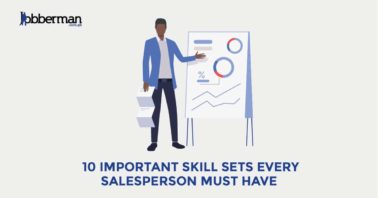Conflict—the action despicable yet seemingly unavoidable. As much as human relations managers do their best to keep conflicts at bay, conflicts still find their way onto the scene, from team conflicts to personality conflicts, task conflicts, and even leadership conflicts. Conflicts do not always have to end with picking a bone, but effective conflict resolution can enhance team bonding and productivity at the workplace.
What is Conflict Resolution?
Conflict “is a situation in which people, groups or countries disagree strongly or are involved in a serious argument. (Oxford Learner’s Dictionaries, 2024).
Conflict Resolution, also known as conflict management, “can be defined as the informal or formal process that two or more parties use to find a peaceful solution to their dispute.” (Katies, para. 1).
Table of Contents
Conflict In the Workplace
Conflict happens everywhere, even in the workplace. But since we spend one-third of our lives at work, we can’t expect to be at loggerheads with other team members. Co-workers come in different forms and have varying personalities and qualities, yet we have to team up with them to make the most of the work. Although there are many reasons why people disagree in the workplace, the significant clusters are listed below.
Types of Conflict At the Workplace
- Personality Clashes
- Leadership Conflict
- Task Conflict
- Creative Conflict
Now, let’s look at them one after the other.
Personality Clashes

According to the free encyclopedia Wikipedia, “This occurs when two (or more) people find themselves in conflict, not over a particular issue or incident, but due to a fundamental incompatibility in their personalities, their approaches to things, or their style of life.” (Wikipedia, 2024). Referencing the DiSC personality types, which depict four major personality types, every worker is more of one disc than the other DiSC. ‘D’ stands for a Dominant personality, ‘I’ stands for Influence, ‘S’ stands for Steadiness, and ‘C’ stands for Conscientiousness. The clash occurs when employees with more of one part of the disc meet with another employee of a different disc.
A dominant personality seeks to complete tasks within the shortest possible time, going all in and out and pushing maximum pressure on others who probably are either of the remaining disc personalities. This personality type is mainly seen as doing too much, being ego-centric, and too knowledgeable, hence disliked by other colleagues.
An Influence personality type is outgoing, sociable, optimistic, easy-going, popularity-seeking, and primarily talkative. Because of their lively nature, they tend to miss out on tasks because they like to have a lively mood. They also are not people who follow through with their tasks.
Whereas the Influence personality type is lively and seeks popularity, the Steadiness personality type is gentle and accommodating, very cautious and accepting. As the word says, they are steady, slow but sure. They are good listeners, making them good co-workers who are teachable. Although they are calm, they still maintain their confidence.
The last personality in the DISC model is the conscientious personality- conscientiousness. Conscientiousness according to pschologytoday.com, “Conscientiousness is a fundamental personality trait—one of the Big Five—that reflects the tendency to be responsible, organized, hard-working, goal-directed, and to adhere to norms and rules.” They exhibit a sense of responsibility and take very good care of whatever is handed to them.
Leadership Conflict
Managers, supervisors and other leaders at the workplace clash over micro-management, poor communication, brand idea differences and many more. Micro-managers always take up even the nitty-gritty of work meant for other leaders because they view the others as not working well or they could do it better. Sometimes, the details micromanagers give are unnecessary and can burst the piles of other leaders. Not only that, but leaders also disagree and have conflicts over what direction their company’s brands should head towards.
Task Conflict
This conflict occurs at all levels of management when employees have different opinions on how tasks should be done. Tasks can be completed using various approaches, but when one seems to think it must be done using their approach, leaving the others’ input out, there would be a conflict.
Creative Conflict
This type of conflict can be avoided. In the world of work, we meet an array of talented people who sometimes make other people feel not gifted enough. This conflict can be avoided when other creative minds are considered and feel more accepted by having their creative ideas used.
Conflict Resolution and How it Works

Resolving conflicts at the workplace may seem simple, but they aren’t as simple as one may assume. The practice involves different techniques that mainly arrive at a compromise. Below are five conflict resolution techniques managers and their teams can employ at the workplace.
Conflict Resolution Technique #1- Avoiding
Avoiding means not getting involved. Yes, just as it means, so does the application. People just withdraw from the conflict when it starts. When the result of a confrontation is deemed to cause more significant harm than the resolution, it is better to avoid it.
Conflict Resolution Technique #2- Accommodating
Accommodation comes from the Latin word – “accommodātus, To cause to come to agreement; to bring about harmony; to reconcile.” (Wiktionary, 2024). This strategy involves one party in the conflict succumbing to the wish of the other party yet not being assertive. This resolution technique is often used when the conflict isn’t significant and needs to be resolved for a meeting or project to continue. Also, it is used when the relationship between the parties matters, hence wanting to keep it.
Conflict Resolution Technique #3- Collaborating
This conflict resolution technique aims to resolve an issue by finding a mutual solution that is accepted by both parties in the conflict. This means both parties have their ideas heard and reach a mutual ground.
Conflict Resolution Technique #4- Competing
Here, one party becomes assertive and incorporative. That party tries to have his or her way at the cost of the other party. This strategy means standing up for one’s ideas, explaining them, and defending them well enough so that they are accepted.
Conflict Resolution Technique #5- Compromising
The parties in a conflict always have underlying concerns, but that, in this technique, means finding a solution that partially satisfies both concerns. Using this approach helps to find a solution quickly.
Conflict at the workplace is inevitable, but its resolution is important to fostering an enabling environment for both employees and management. By understanding these conflict resolution techniques, individuals and teams at all business levels can handle conflicts as they arise.





